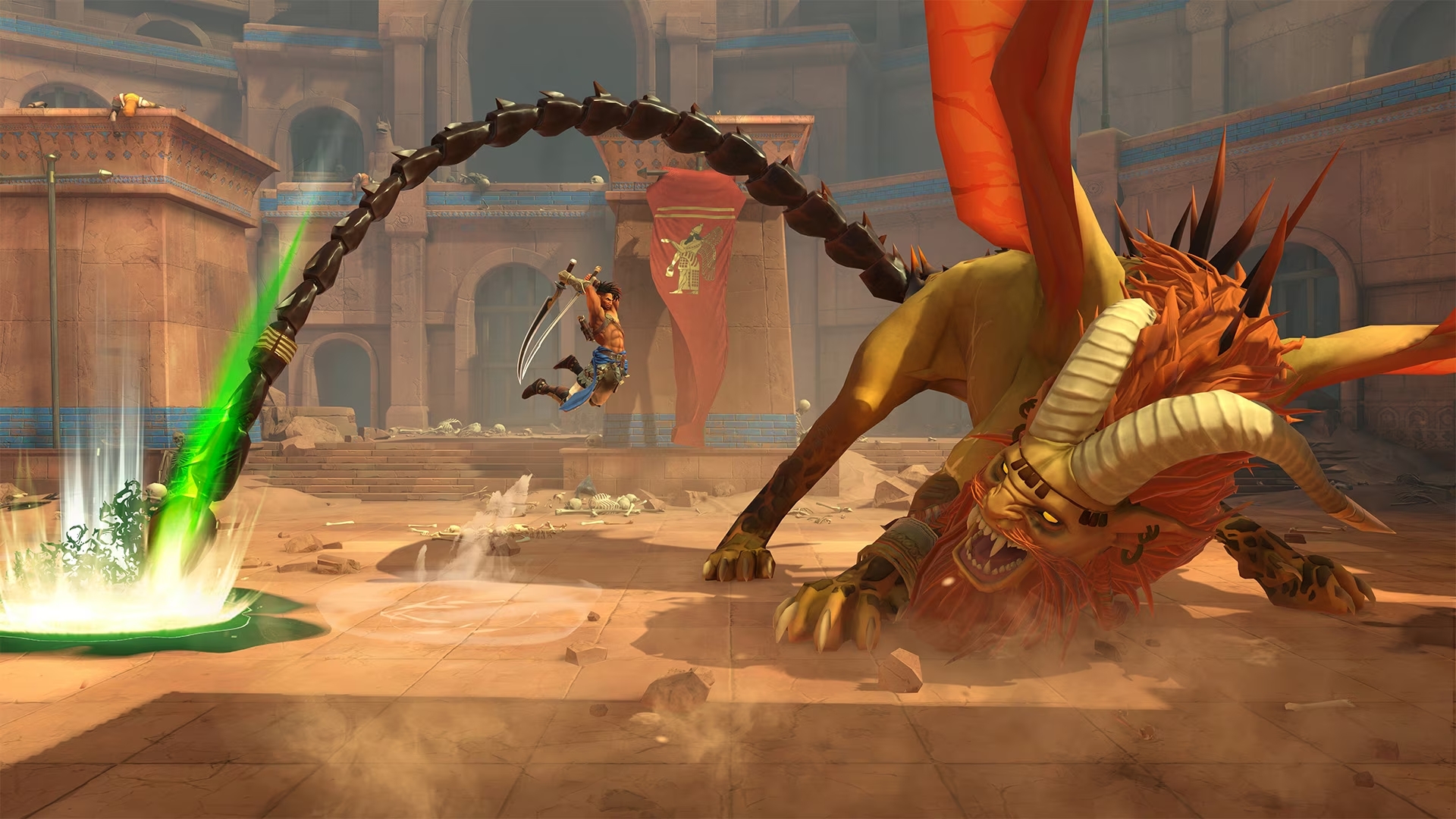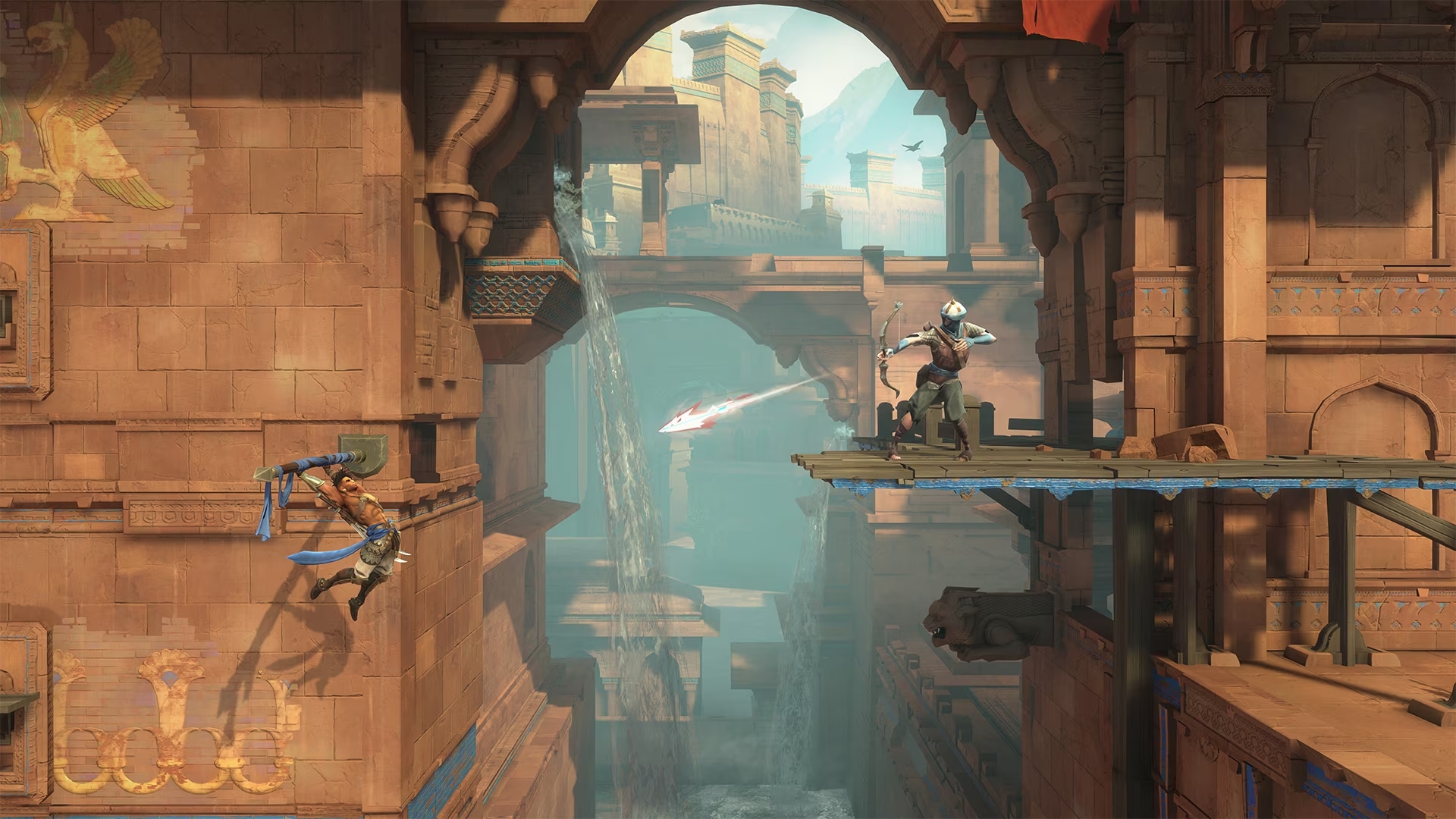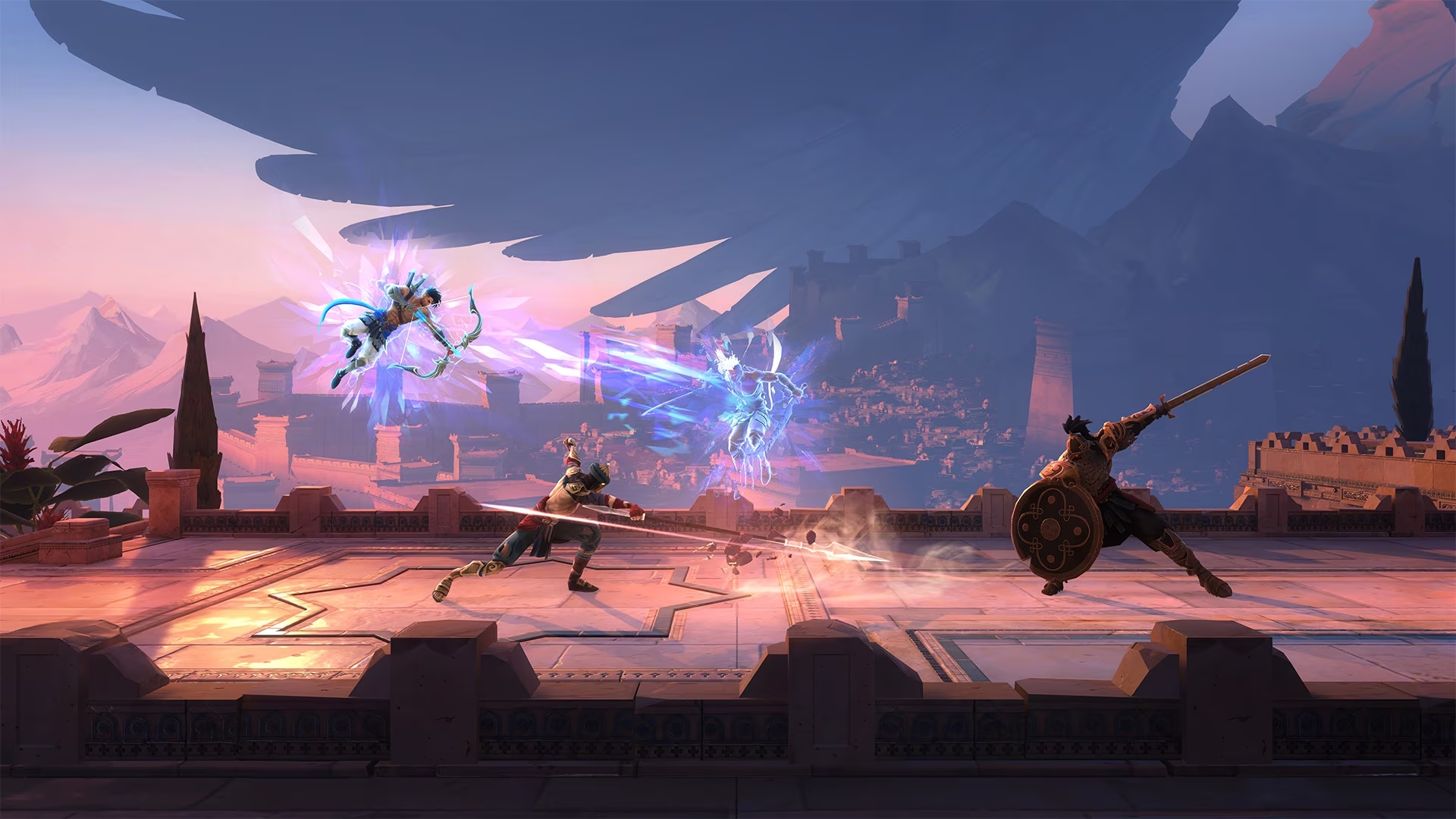Prince of Persia: The Lost Crown preview - mountain of mystery
A royal welcome

In preview with an early build of Prince of Persia: The Lost Crown, I tried out the latest entry in this much-beloved series. Even after three hours of play, I found that Ubisoft Montpellier's upcoming 2.5D platforming metroidvania never lets itself get bogged down. Much like protagonist Sargon himself, the entire side-scrolling adventure feels lightweight and agile. Combat mechanics are responsive, traversal is a joy, and the plot, while undoubtedly present, paints its mythology with broad, accessible brush strokes that don’t leave you caught up in unnecessary detail.
After a quick tutorial, we swiftly find that Prince Ghassan has been kidnapped, prompting Sargon to venture to the mysterious Mount Qaf to save him along with the rest of the Immortals - a gang of Persia’s most heroic soldiers. Soon, we’re jumping our way through puzzle rooms, avoiding magical traps, and fighting supernatural monsters, all as it gradually becomes clear that the mountain is a place of myth and legend, where time itself appears broken.
All of this serves to immerse and engross, pulling you into The Lost Crown’s eerie yet beautiful setting. This is reinforced by the fluidity of the game’s mechanics. Every element of the game feels like a delightful puzzle, where you must bring your tools and know-how to bear in the hope of finding a solution.
You'll need to engage in forward planning to traverse a challenging section of the map. Spinning blades or rotating platforms mean that timing is essential, but a failed attempt never feels unfair, thanks to generous telegraphing and clear presentation. So clean is Lost Crown’s design that you never feel cheated or hard done by.
Every element of the game feels like a delightful puzzle
The same can be said for the game’s combat, where well-timed parries and skillful dodges serve as Sargon’s lifeblood. Enemy attacks are telegraphed with wide, gorgeous animations that draw the eye, but keep you on your toes all the same. While you can parry attacks in the moment, there’s no option to block for prolonged periods. This means that timing is, once again, essential, and learning enemy attack patterns is crucial when dealing with Qaf’s parade of mythical monsters. As with traversal, combat in Lost Crown offers an unshakable sense of even-handed fairness.
Enemy attacks come in three kinds, clearly telegraphed by a color-coded glow. No glow means a normal attack, while a red glow signals an unparriable attack that must be dodged. Most excitingly, we also have what the game calls ‘reckless attacks,’ which, if parried correctly, cause Sargon to carry out a dramatic counter-attack, animated with stark colors that complement the already-vivid art style.
Charting a course

Prince of Persia: The Lost Crown’s approach to the metroidvania genre as a whole is equally refreshing. All the hallmarks are here: you explore a lavish 2D environment, getting your hands on new powers and equipment that unlock previously barred areas, allowing you to explore further. That said, the game doesn't rest on the genre's laurels.
Sign up for breaking news, reviews, opinion, top tech deals, and more.
The process of backtracking to old areas with new powers is a staple of any fantastic metroidvania. However, The Lost Crown allows you to capture in-game images of areas of the map, letting you mark the places that you need to revisit later on down the line. Despite having a linear plot, this element allows you to make Sargon’s quest your own, helping you return to areas that piqued your interest earlier in your playthrough.
Moreover, the act of traversal itself feels dynamic and rewarding, even if you’re retreading new ground. This, in part, is thanks to an air dash you unlock fairly early on in the game. Though Sargon always has the ability to wall jump, the dash radically expands your platforming options. Reminiscent of the dash in Celeste, Sargon’s ability opens up new avenues of exploration, while never feeling too generous. Executing the dash may be as simple as a single button press, but getting the most out of it requires timing, patience, and precision. This means that rather than feeling like a repetitive slog, retreading old ground often feels like training - an opportunity for you and Sargon to keep your skills sharp.
Rise to the challenge

As well as providing a fluid and satisfying metroidvania experience, my three hours or so with Prince of Persia: The Lost Crown also showed me that Ubisoft Montpelier had taken great pains to integrate modern game design hallmarks, too.
Elements from ‘soulsborne’ games, such as pseudo-bonfires and respawning enemies, are woven throughout Lost Crown, though never at the expense of the game’s rich mythology or slick, playful feel. Waqwaq trees dot the map, providing Sargon with places where he can recover his wounds or adjust his equipment. These feel very much like Elden Ring's Sites of Grace, serving as interstitial checkpoints between Mount Qaf’s various threats.
Moreover, the game’s emphasis on parries, dodges, and setpiece boss battles feels very reminiscent of the soulsborne genre, with each of Sargon’s movements feeling like a commitment. However, this approach fits The Lost Crown like a glove. At its heart, the game is a series of puzzles - a mentality imbued into its boss encounters. Facing off with a Manticore towards the end of my play session, I found myself having to memorize the boss’ attack patterns between deaths, learning the intricacies of its different phases and how to dodge the different permutations of its deadly scorpion-tail sting. This satisfying learning curve culminated in a powerful sense of accomplishment when the Manticore eventually fell.
If you tire of a boss fight, you can always just go somewhere else
Despite drawing from soulsborne games, The Lost Crown stays true to its vision of being a mythologically charged adventure, while never sacrificing its deft sense of pacing. After all, thanks to the open-ended metroidvania style, if you tire of a boss fight, you can always just go somewhere else to develop Sargon’s skills and solve other mysteries. Even in this preview build, the game felt generous and open-ended. Given it’s been over 10 years since the previous mainline Prince of Persia title, The Forgotten Sands, this feat is particularly impressive.
If my time with this preview build is any indication, the spirit of Prince of Persia seems alive and well. With the game slated for release on January 15, 2024, for PS5, PS4, Xbox Series X|S, Xbox One, Nintendo Switch, and PC, it looks like The Lost Crown will get 2024 off to a promising start.
Looking for something to play in the meantime? Check out our lists of the best single-player games and the best story games.

An editor and freelance journalist, Cat Bussell has been writing about video games for more than four years and, frankly, she’s developed a taste for it. As seen on TechRadar, Technopedia, The Gamer, Wargamer, and SUPERJUMP, Cat’s reviews, features, and guides are lovingly curated for your reading pleasure.
A Cambridge graduate, recovering bartender, and Cloud Strife enjoyer, Cat’s foremost mission is to bring you the best coverage she can, whether that’s through helpful guides, even-handed reviews, or thought-provoking features. She’s interviewed indie darlings, triple-A greats, and legendary voice actors, all to help you get closer to the action. When she’s not writing, Cat can be found sticking her neck into a fresh RPG or running yet another Dungeons & Dragons game.